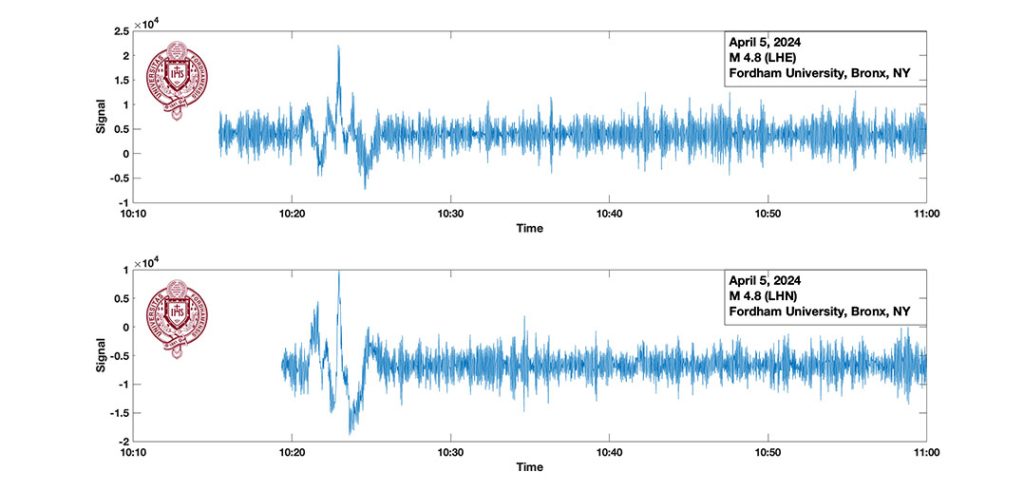A quick glimpse at a readout from the station’s instruments reveals a large spike around 10:23 a.m., followed by smaller spikes until 11 a.m., said Stephen Holler, Ph.D., an associate professor of physics at Fordham, who heads the station, located next to Freeman hall on the Rose Hill campus.
“But overall, this earthquake was a very short and very quick event compared to some of the others that we’ve seen where it seems like it kind of rings for a long time,” said Holler.
He said that although the quake, which struck in Lebanon, New Jersey, rattled residents from Philadelphia to Boston, it was not nearly as bad as other recent quakes.
“The 7.8 magnitude quake in Taiwan—that was 1,000 times more powerful than what we just felt, for perspective. They can get truly scary,” said Holler, whose expert commentary was featured by several media outlets throughout the day. But in the New York region, today’s quake was the largest felt since 2011.
As for aftershocks, Holler said residents need not be worried.
“There may be some aftershocks, which will be the ground resettling down after it slipped, but I don’t expect them to be any larger than what we just experienced,” he said.
The Fordham seismic station, which is operated by the Department of Physics, has been recording earthquakes around the world from the same small building on the Rose Hill campus since 1931. One of the few seismic stations in New York state, it now operates with digital technology.
It’s part of a vast network of monitoring stations that work together to determine data such as the strength and length of the quake, as well as the depth of it. Holler said it’s comparable to the way law enforcement uses data from multiple cell phone towers to pinpoint the location of a single cell phone.
The station has a state-of-the-art broadband seismometer and also houses a strong motion detector under a United States Geological Survey (USGS) program to assess earthquake risk remediation in large metropolitan centers. Data from the station is streamed to the USGS data repository in Boulder, Colorado.
The science of earthquakes has been studied at Fordham since 1910, when the first monitoring facility was constructed in the basement of Cunniffe House.
Rumblings from the offices of the University president apparently disturbed the sensitive instruments, so in 1923, the University constructed a new seismic observatory donated by William Spain and dedicated to the memory of his son William. It was moved several times before finding a permanent home next to Freeman Hall, where the physics department is located.


